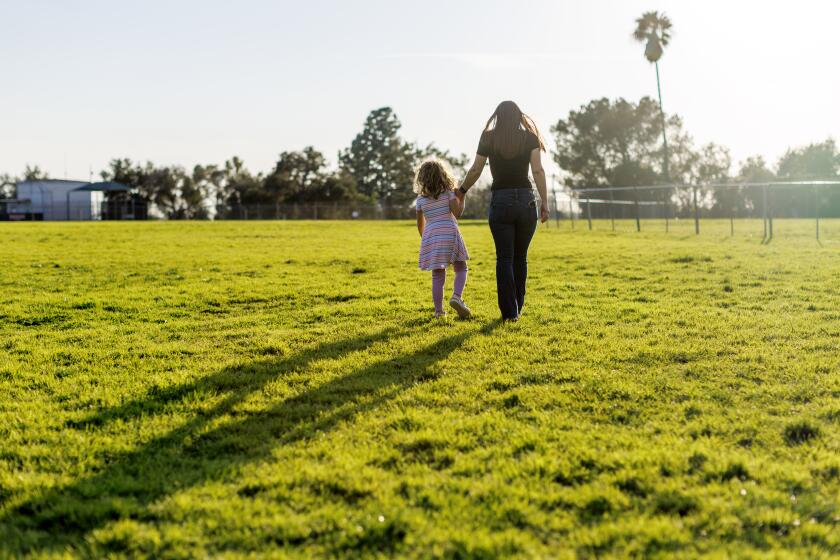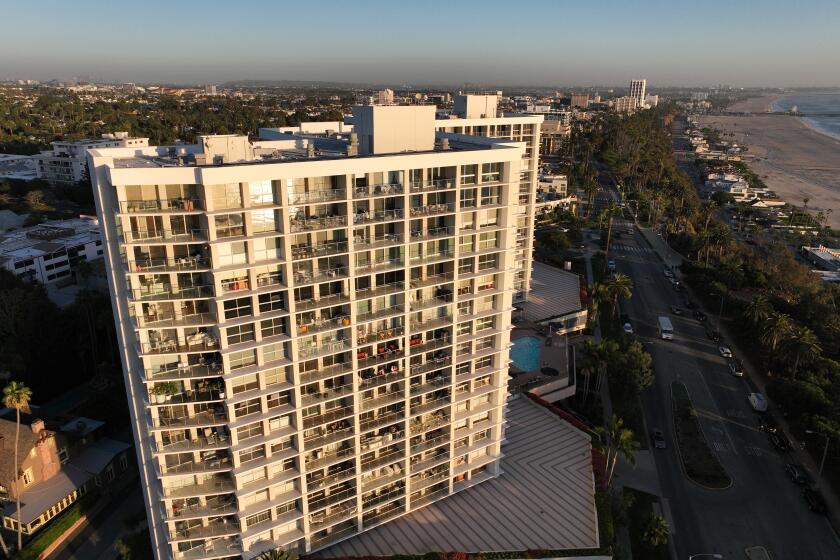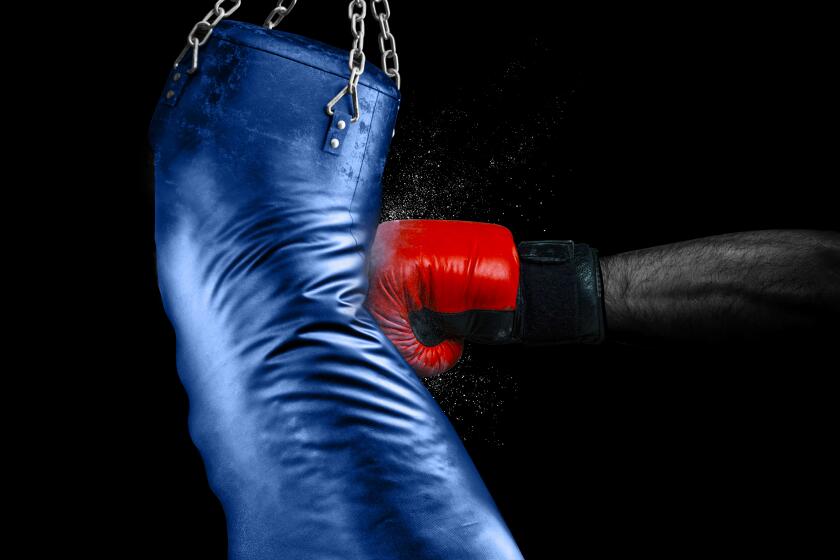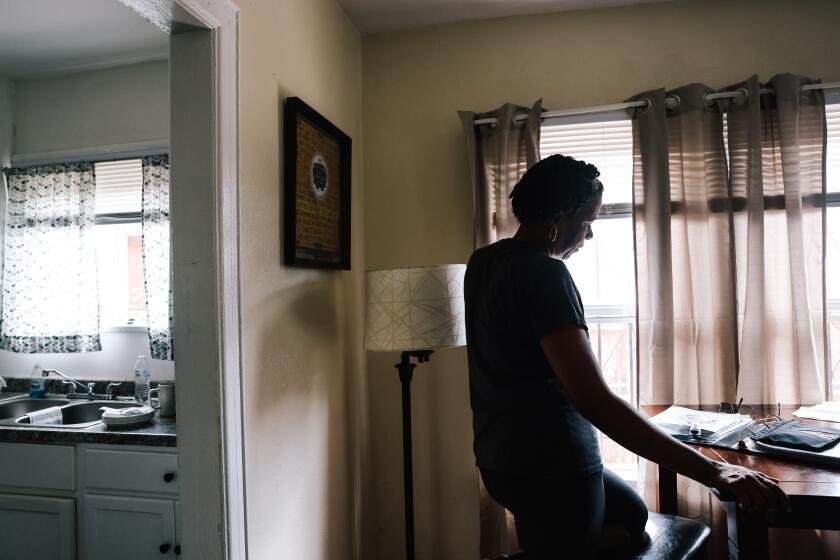No transcript, no appeal: California courts face ‘crisis’ over lack of records

California’s highest-ranking court officials are warning of a growing “constitutional crisis” playing out across the state’s judicial system, as hundreds of thousands of hearings are held without a precise record of what occurred.
The problem is a shortage of public court reporters, the stenographers who transcribe proceedings, and state law that bars electronic recording devices from being used in certain types of hearings — even when a reporter isn’t available.
Courts have tried to triage the problem by reserving available court reporters for the most important cases, such as felony trials. But other critically important proceedings — such as for domestic violence restraining orders and child custody disputes — routinely are going unrecorded.
On a daily basis, litigants are told they can either hire their own reporters — for hundreds or even thousands of dollars per hearing — or simply go without a record.
The result, officials and advocates agree, is that poorer Californians have less access to justice. Without a verbatim record of a proceeding, litigants can struggle to defend their rights — including against abusers — and find it impossible to appeal rulings against them, they said.
“It is absolutely an access to justice issue,” said Cory Hernandez, senior managing attorney for the Family Violence Appellate Project, which regularly confronts the issue in domestic violence cases. “Not having court reporters is disproportionately impacting women, and women of color in particular.”
Adam Vena’s claim that California took his child because he wouldn’t accept the child is transgender went viral. The case is far more complicated than that.
Last year, 332,000 hearings occurred without a court reporter or an electronic recording device in Los Angeles County Superior Court alone. California Chief Justice Patricia Guerrero warned in a speech last month that, statewide, about 133,000 such hearings occurred in a single three-month period.
“We all want and need more licensed court reporters to be trained, certified and hired,” Guerrero said. “But the number of certified court reporters continues to decline and it threatens access to justice — especially for vulnerable Californians.”
Guerrero mentioned offering bonuses and better pay to recruit and retain staff, but said “devastating effects are already being felt by far too many court users,” and that she is eager to work with others to find “practical solutions.”
In Sacramento, where the issue has seemed intractable for years, a tense debate over the best path forward has pitted court reporters and their labor representatives against court administrators and justice reform advocates — testing the priorities of liberal lawmakers in the process.
Looming over it all is the rapid advance of artificial intelligence and other modern recording technology, which some view as a threat to thousands of good jobs and others see as a promising solution.
“It is in some ways a traditional labor, access to justice issue,” said Chesa Boudin, executive director of Berkeley Law’s Criminal Law & Justice Center and San Francisco’s former district attorney. “The extra element of technology and AI … makes it a little bit more complicated.”
What caused the problem?
Because of the vital role that transcripts play in the legal system, including as the basis for appeals, court reporters — also known as “guardians of the record” — have long been viewed as essential in public proceedings, like judges, clerks and bailiffs.
The hiring standards are tough. Candidates must pass a rigorous licensing exam involving grammar, punctuation, and legal jargon, plus transcribe 200 words per minute with 97.5% accuracy, among other qualifications. The requirements are stricter than in other states, and many who pursue the career fail.
As of 2023, California court systems had the equivalent of 1,164 active, full-time court reporters on their payrolls, according to a March report from the Legislative Analyst’s Office, around 700 positions short of the needed staffing. But the gap is not entirely due to a lack of people qualified to do the work, as the same report showed more than 4,700 active licensees in the state.
A Department of Consumer Affairs report from May found that just 41% of surveyed reporters primarily worked in courts — and many of those were freelancers for hire, not full-time employees. The rest worked in the private sector.
Diana Van Dyke, a public court reporter for decades and a board member of the Los Angeles County Court Reporters Assn., blamed judicial system mismanagement for driving employees into the private sector — starting with steep reporter layoffs during an economic downturn more than a decade ago.
The fact that court officials have ceded reporting services for entire areas of courthouse law — like family law — to the private sector since only exacerbated the problem, Van Dyke said.
“The court created the very existence of the ‘potential constitutional crisis’ that they are complaining about,” she said.
David W. Slayton, the L.A. County Superior Court’s executive officer, called that argument “disingenuous,” and said the problem is recruitment and retention. The courts, he said, are doing “everything in our power” to compete — including by offering annual salaries of $130,000, good benefits, additional fees for transcription services and $50,000 signing bonuses.
A fight to reclaim the HOA board at the Ocean Towers luxury residential co-op eventually uncovered millions of dollars of alleged fraud and caught the attention of the California Department of Justice.
It just isn’t working, Slayton said, in part because private sector reporters can choose when and where they work, sometimes work remotely, pick the cases they cover, and still make thousands of dollars a day.
Something has to change, he said — and soon, given that about 70% of public reporters in the L.A. County Superior Court system are eligible for retirement.
“We need to come together … and figure out a way to solve this,” Slayton said. “We are pleading for a solution.”
What is the solution?
Several measures to help reduce the reporter shortage have been implemented, including the state’s 2022 approval of so-called voice writers, or court reporters who speak into a device to capture what is being said rather than typing out shorthand notes.
Other solutions being discussed include allowing court reporters to appear remotely, to both save time and match the flexibility enjoyed by private reporters, and creating one pool of court reporters for all the state’s courts, to increase efficiency and minimize competition between systems.
However, what court officials and many legal advocates are pushing for the most is for electronic recording to be allowed in all civil proceedings — as it is already in other state proceedings, in other states’ courts and in some federal courts.
Court officials argue that electronic recording devices should be allowed as a backup whenever a reporter is not available, and that the law barring them is based partly on outdated notions of what recording devices are capable of capturing.
Last year, Sen. Susan Rubio (D-Baldwin Park) introduced a bill in Sacramento that would have allowed electronic recording — but it stalled amid fierce opposition from court reporters and their union lobbyists. The critics warned the bill would give courts a green light to abandon reporter recruitment efforts and go all-in on electronic recordings, regardless of promises to the contrary.
Conservative animosity toward California has evolved from 1960s jabs at the counterculture in the Bay Area and the cultural influence of Hollywood to a more hard-edged partisanship.
Recording devices provide an inferior record, opponents argue, in part because they cannot ask speakers to slow down or speak up or distinguish between speakers who sound similar, as reporters often have to do. Some claim relying on electronic recordings will produce inaccurate records — so much so that no record is preferable.
L.A. County Superior Court Presiding Judge Samantha P. Jessner said today’s recording systems are highly sophisticated, using a network of strategically placed microphones.
“Any claim that the technology won’t accurately and thoroughly capture the record I think ignores where we are as a society in terms of technology sophistication,” Jessner said.
She said there would continue to be plenty of work for court reporters if the technology were introduced, including in transcribing a huge influx of recordings. The courts, she said, would continue hiring too, as they still believe that reporters are the best option — they just can’t be the only option.
Shelley Curran, administrative director of the Judicial Council, which sets policy for the state’s courts and backed the bill, said something has to give, as the current system is unfair to low- and moderate-income litigants.
Boudin said digitizing modern courtrooms may be inevitable, but warned of problems he experienced with electronic recordings during his career as a San Francisco prosecutor, including in misdemeanor cases where testimony was muffled or inaudible — problems a court reporter would have prevented.
“That’s their job,” Boudin said. “An automated recording system won’t do that.”
Hernandez, of the Family Violence Appellate Project, said all the arguments for why electronic recording devices should not be used are “just political” and “contrary to common sense.”
Ruby Scott’s file remained classified as “cleared by arrest,” even after three young brothers were cleared. Years passed and not a single fresh sheet of paper got added to the file.
Many domestic violence cases play out for years, before different judges. Survivors often have to prove a “change in circumstances” in order to get a new protective order or change a child custody agreement. If they are before a new judge, and they have no transcript of past proceedings to prove their circumstances have changed, they can miss out on deserved relief, Hernandez said.
Courts are required to provide reporters to many litigants who can prove they are indigent, but that policy is little known, underutilized and of no help to middle-income litigants who don’t qualify and can’t afford to hire a reporter, advocates said.
Overwhelmingly, the burdens are falling on women, women of color, LGBTQ+ people, poor people and people in rural communities, “so for legislators to not act” is a dereliction of duty, Hernandez said.
“They tell us time and again that they are committed to helping survivors and protecting them, but I guess that commitment only goes so far.”
More to Read
Sign up for Essential California
The most important California stories and recommendations in your inbox every morning.
You may occasionally receive promotional content from the Los Angeles Times.















